https://www.youtube.com/watch?v=V6_gKNsQ1vQ
How To Make Pour-Over Coffee with a Hario Dripper
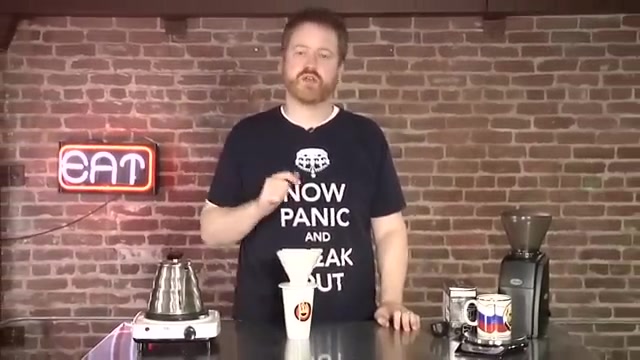
Hey guys , this is Will from tested .
I'm here today to talk about , well , pour over brewing .
This is the drip kettle and it's kind of neat because it has this really long neck .
I'll show you why .
That's awesome .
In a minute .
We also have the V 60 which is a dripper pour over type device .
Basically , you put a paper filter in here and dump some coffee and put this on your mug and uh well , coffee .
Let's get right to it and I will show you how it is done .
OK ?
So the first thing I've done is weighed 24 g of coffee .
I put in my Vladimir Putin mug just gonna dump this in here .
Well , grind it up .
So the thing that makes the Mario V 60 special is this , this hole in the bottom allows you to use a pointy filter instead of a straight edge bottom filter .
So what I'm going to do is get the filter ready to go and the pour over device the V 60 .
And I'm going to do that by actually folding the seam of the filter .
We did this for the Chex as well .
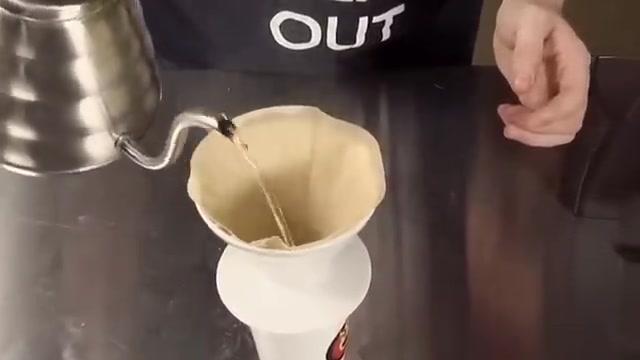
Hey guys , this is Will from tested .
I'm here today to talk about , well , pour over brewing .
This is the drip kettle and it's kind of neat because it has this really long neck .
I'll show you why .
That's awesome .
In a minute .
We also have the V 60 which is a dripper pour over type device .
Basically , you put a paper filter in here and dump some coffee and put this on your mug and uh well , coffee .
Let's get right to it and I will show you how it is done .
OK ?
So the first thing I've done is weighed 24 g of coffee .
I put in my Vladimir Putin mug just gonna dump this in here .
Well , grind it up .
So the thing that makes the Mario V 60 special is this , this hole in the bottom allows you to use a pointy filter instead of a straight edge bottom filter .
So what I'm going to do is get the filter ready to go and the pour over device the V 60 .
And I'm going to do that by actually folding the seam of the filter .
We did this for the Chex as well .
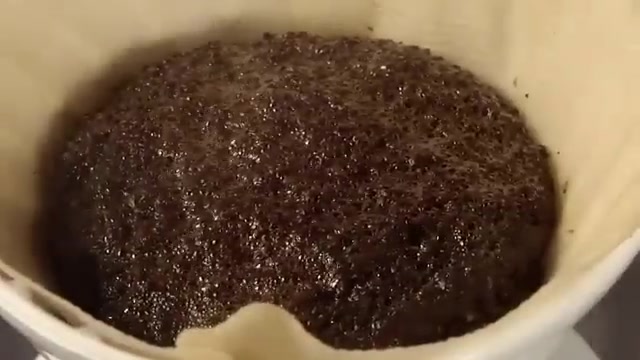
You want to get it as close to the edge as you can .
It doesn't really matter if you mess it up a little bit and then I'm going to drop the filter right into the top .
Try to get it popped open .
It's not going to stay open real well .
But I'm , I'm going to run some water through the filter and that will help stick it to the edge .
It helps get a little bit of the paper , taste out of the filter .
If it folds in , no big deal , don't worry about that .
But you want to get the filter nice and wet and this will also serves the benefit of heating up your mug and the pour over cone as well .
I'm going to actually dump this into my Vladimir Putin mug .
If you want , you can lift the cone out a little bit .
People say to do this , I don't think it makes a whole lot of difference .
The goal , of course , as you're doing this is to try to get the water to run through the coffee and not down the edges of the cone .
So I'm going to do is make a little tiny .
Well , it doesn't have to be a big one .
I'm going to let the water cool down .
Ideally , boiling water is 212 °F .
You really want this to be 202 5 .
And what we're going to do first is wet the coffee .
So I'm going to pour about an ounce of coffee in here .
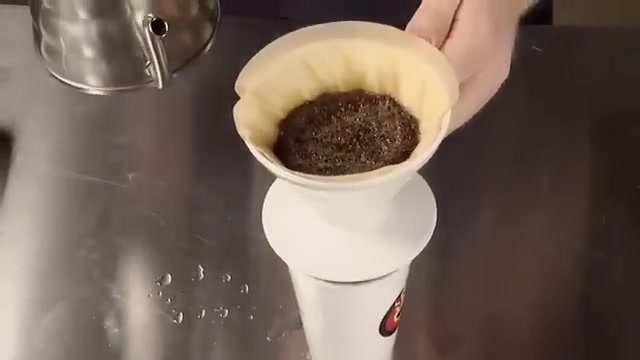
And this is where you see the beautiful thing about the hair kettle , it's balanced so that you can just rest it and it , and it pours ever so gently .
You get really good control over the water as it goes into the cone .
Some people let the coffee stay moisture up for 45 45 50 seconds .
I go a little bit faster but you should experiment and see what you like .
And you can see the gasses are pouring up here on the top and we're getting a nice little dome on our grounds , which is going to make a nice tasty cup of coffee .
You want to stay off the edges of the filter with the water and really have good control over that .
And you also don't want to fill too much water into the , into the pot at one time , into the cone at one time .
You really want to keep the cap of the water as low as you can , the top of the water level , as low as you can .
About half .
You can , of course , put this on a rack .
You can put it on a coffee pot , but you want to keep an eye on it .
So you don't actually over spill and make an enormous mess when you're making coffee this way .
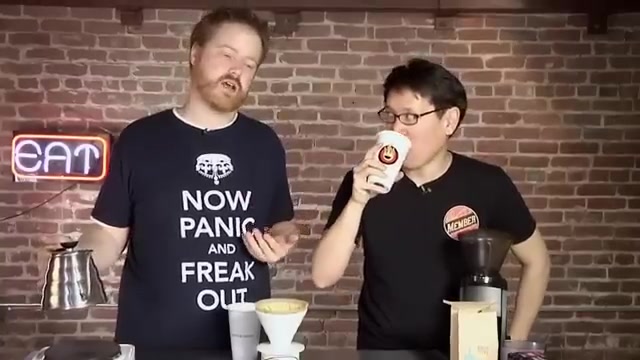
And the neat thing about the pour over is you can make as much coffee or as little as you want with this .
If you just want to make a cup , you can make a cup .
If you want to make more , you can make more .
Um , I've even made whole pots with this before and that worked reasonably well .
I'm going to call that a cup and it's , uh , time to enjoy some coffee .
So , how did I do , Chen ?
Let me , let me test this .
I brought my own work .
That's , that's pretty good .
Coffee .
Does have a very sharp aftertaste .
The thing about this ?
The catch with the , is it , how much do you think this kettle cost $20 ?
That's a good best .
It's made of aluminum , I think .
Maybe stainless steel .
It's very light .
It feels kind of flimsy , almost like it's made of tin .
It is 60 bucks .
Yeah .
The reason it's 60 bucks is because you can really fine control the amount of pouring , you know , you can turn it on and off .
That's a fancy pore .
It's , you know , you can get all over the place .
Are you looking for a way to reach a wider audience and get more views on your videos?
Our innovative video to text transcribing service can help you do just that.
We provide accurate transcriptions of your videos along with visual content that will help you attract new viewers and keep them engaged. Plus, our data analytics and ad campaign tools can help you monetize your content and maximize your revenue.
Let's partner up and take your video content to the next level!
Contact us today to learn more.